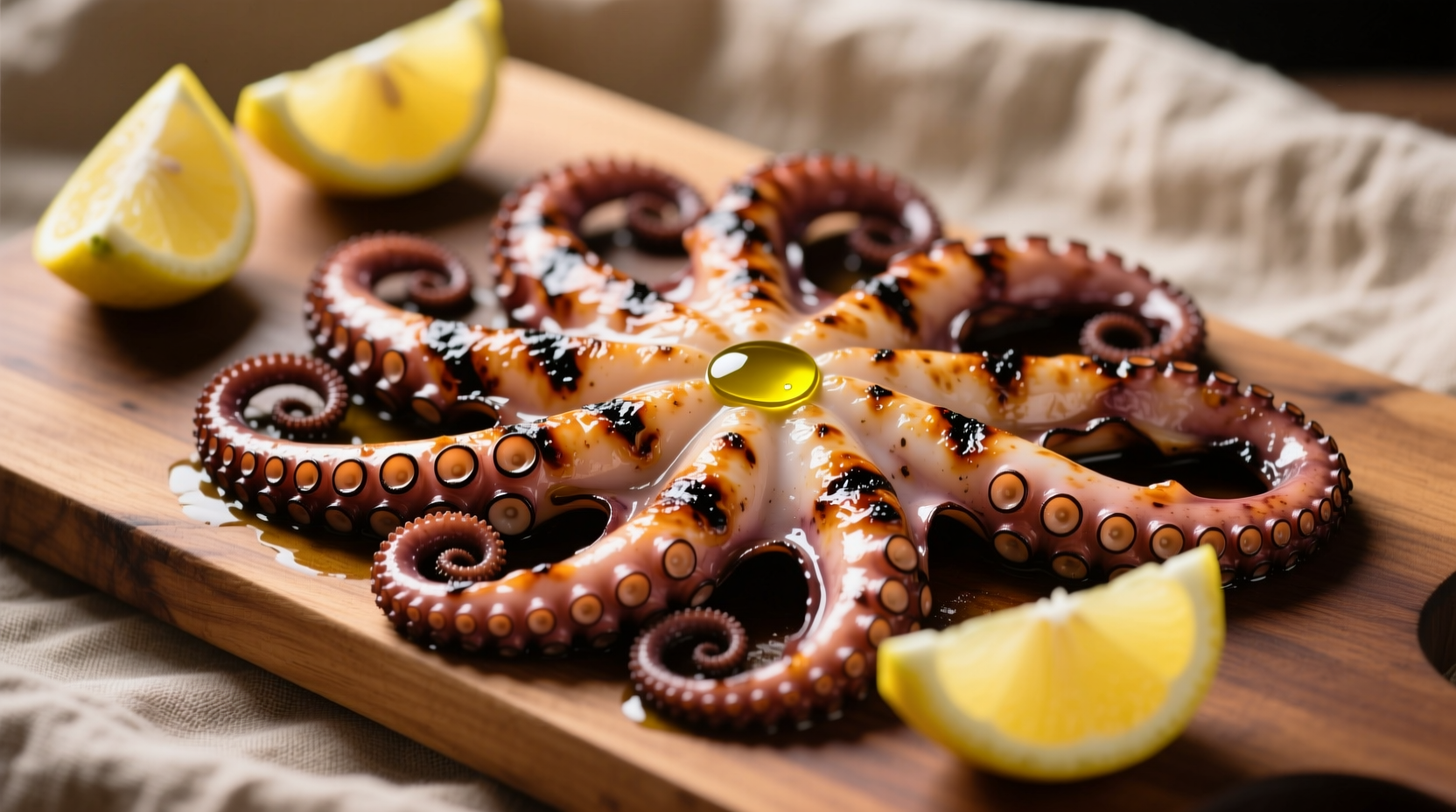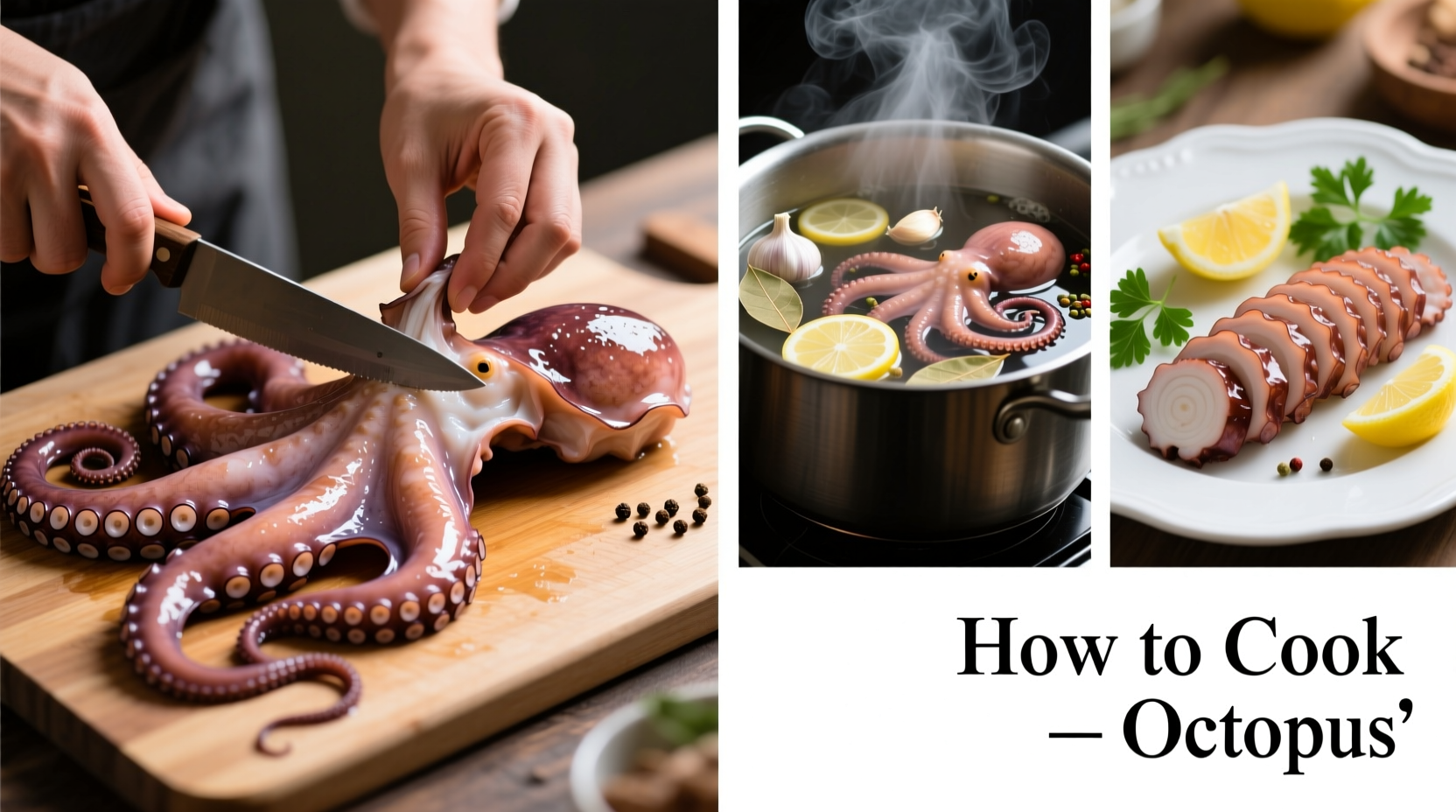Master the art of cooking octopus with this comprehensive guide. Learn how to select, clean, tenderize, and cook octopus using professional techniques that guarantee tender, flavorful results every time—no rubbery texture, just perfectly prepared seafood.
Octopus remains one of the most misunderstood seafoods, often feared for its potential to turn rubbery when cooked improperly. Yet with the right techniques—which combine culinary tradition and food science—you can transform this cephalopod into a restaurant-quality dish at home. This guide reveals the exact methods professional chefs use to achieve consistently tender octopus, whether you're grilling, boiling, or pan-searing.
Understanding Octopus: Types and Selection
Before you begin cooking, selecting the right octopus makes all the difference. Two primary varieties dominate markets:
| Type | Characteristics | Best Cooking Methods |
|---|---|---|
| Common Octopus (Octopus vulgaris) | Firm texture, rich flavor, typically 2-10 lbs | Boiling followed by grilling, roasting |
| Giant Pacific Octopus (Enteroctopus dofleini) | Larger size (up to 100 lbs), milder flavor | Slow simmering, braising |
When selecting fresh octopus, look for these indicators of quality:
- Shiny, moist appearance with no strong ammonia odor
- Firm texture that springs back when pressed
- Deep ruby-red or purplish color (not gray or brown)
- Clear, plump suckers without discoloration
The Essential Preparation Process
Proper preparation separates successful octopus dishes from disappointing ones. Unlike fish, octopus requires specific handling to achieve tenderness.
Cleaning Your Octopus
Follow these steps for thorough cleaning:
- Remove the beak by pressing upward where the tentacles meet the head
- Turn the head inside out and scrape out any internal organs
- Rinse thoroughly under cold water, removing any sand or debris
- Scrub the exterior with a brush to remove slime
Scientifically-Backed Tenderizing Methods
Food science explains why octopus becomes tough: its muscle fibers contain high levels of collagen that contract when heated. The key is breaking down this collagen through controlled cooking. According to research from the National Oceanic and Atmospheric Administration, octopus collagen begins breaking down at 130°F (54°C) and continues through 180°F (82°C).
Three evidence-based tenderizing approaches:
- Simmering method: Submerge in liquid just below boiling point (180-200°F) for 30-60 minutes depending on size
- Freeze-thaw technique: Freeze octopus for 24 hours before cooking to break down muscle fibers (per University of California Sea Grant studies)
- Pressure cooking: Cook at high pressure for 15-20 minutes for consistent tenderness

Cooking Methods Demystified
After proper tenderizing, the final cooking stage develops flavor and texture. Each method produces distinct results:
Boiling/Simmering: The Foundation Technique
Boiling remains the most reliable method for achieving tender octopus. Here's the professional approach:
- Start with cold, salted water (use 1/4 cup salt per gallon)
- Add aromatics: bay leaves, peppercorns, onion, and celery
- Submerge octopus, then bring to just below boiling
- Maintain temperature at 180-200°F for 30-60 minutes
- Test tenderness by inserting a knife into the thickest part of a tentacle
Grilling: Adding Char and Complexity
After simmering, grilling creates that sought-after smoky flavor. For best results:
- Dry octopus thoroughly with paper towels
- Brush with olive oil and season simply with salt
- Preheat grill to medium-high (375-400°F)
- Grill for 2-3 minutes per side until charred
- Finish with lemon juice and fresh herbs
Pan-Frying: Quick and Flavorful
Perfect for pre-cooked octopus, pan-frying creates crispy edges:
- Heat olive oil in cast-iron skillet over medium-high heat
- Add pre-cooked octopus pieces in single layer
- Cook 3-4 minutes per side until golden brown
- Add garlic, chili flakes, and fresh parsley during last minute
- Finish with splash of vinegar or lemon juice
Traditional Recipe Variations
Once you've mastered the fundamentals, explore these regional preparations:
Mediterranean Grilled Octopus
This Greek-inspired preparation highlights simplicity:
- Simmer octopus in water with bay leaves for 45 minutes
- Marinate in olive oil, lemon juice, and oregano for 30 minutes
- Grill over charcoal until charred
- Serve with lemon wedges and extra virgin olive oil
Asian-Style Stir-Fried Octopus
A Korean-inspired preparation that balances heat and sweetness:
- Simmer octopus with ginger and scallions for 40 minutes
- Stir-fry with gochujang, soy sauce, sesame oil, and sugar
- Add garlic, chili peppers, and sliced vegetables
- Garnish with toasted sesame seeds and green onions
Avoiding Common Octopus Cooking Mistakes
Even experienced cooks make these critical errors when preparing octopus:
Overcooking After Tenderizing
After the initial tenderizing phase, additional cooking should be brief. The FDA Food Code recommends cooking seafood to 145°F internal temperature, but for octopus that's only necessary during the final searing—not the tenderizing phase. Overcooking at this stage causes the already-tenderized meat to tighten again.
Insufficient Seasoning
Octopus requires more salt than you might expect due to its marine environment. Season your cooking liquid generously—think of it as "seasoning the ocean" that the octopus came from.
Skipping the Resting Period
Allow cooked octuba to rest for 5-10 minutes after the final cooking stage. This lets the muscle fibers relax and redistribute moisture, resulting in more tender bites.
Serving and Pairing Suggestions
How you present and accompany your octopus completes the experience:
- Classic Greek pairing: Serve with lemon-dressed potato salad and crisp Assyrtiko wine
- Spanish tapas style: Accompany with romesco sauce and crusty bread
- Asian fusion: Pair with kimchi and a light lager beer
- Modern presentation: Slice tentacles on bias for elegant plating
Storage and Leftover Tips
Properly stored, cooked octopus maintains quality for 3-4 days in the refrigerator. For best results:
- Store in airtight container with some cooking liquid
- Reheat gently in a skillet with olive oil rather than microwave
- Use leftovers in salads, pasta dishes, or fried rice
Frequently Asked Questions
Here are answers to common questions about cooking octopus:











 浙公网安备
33010002000092号
浙公网安备
33010002000092号 浙B2-20120091-4
浙B2-20120091-4